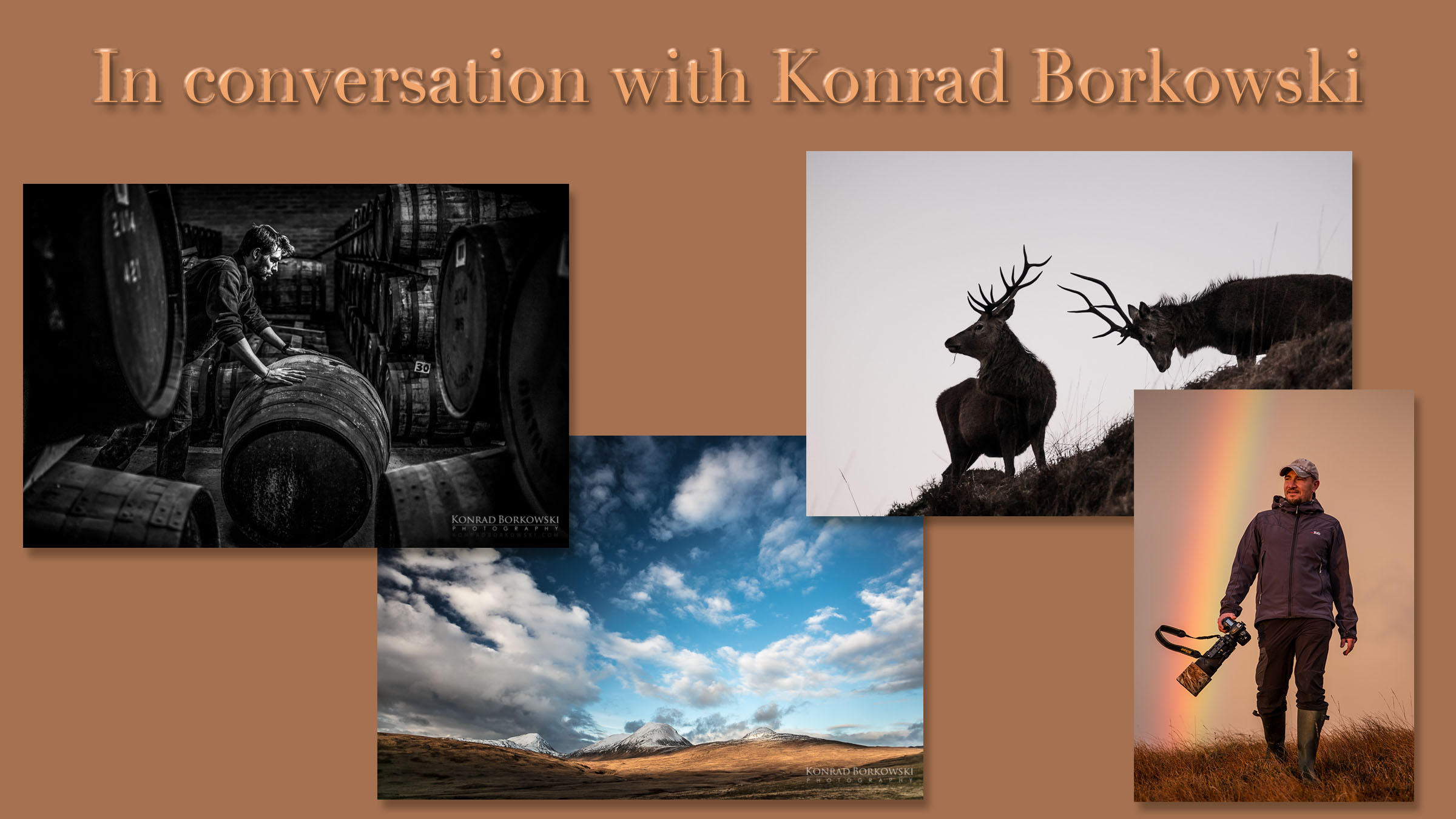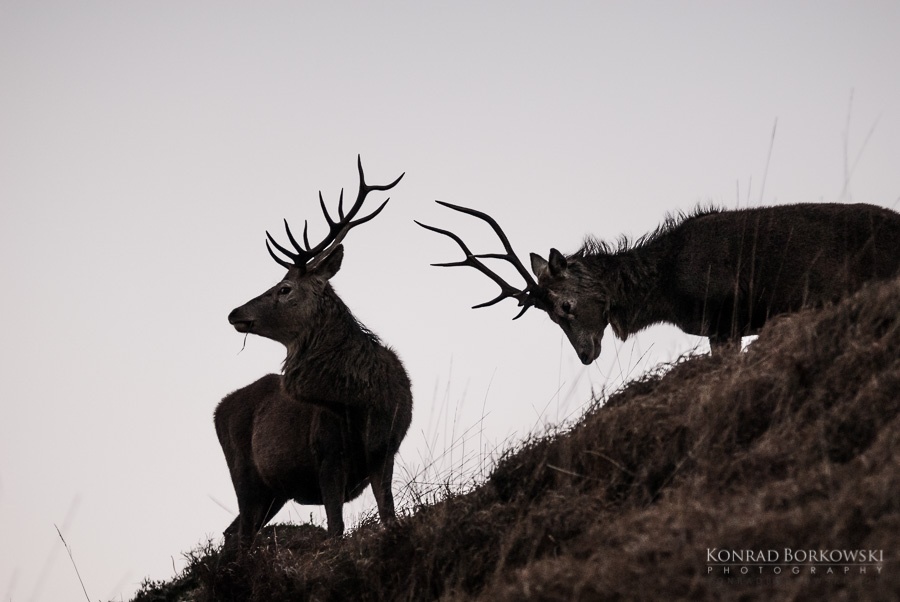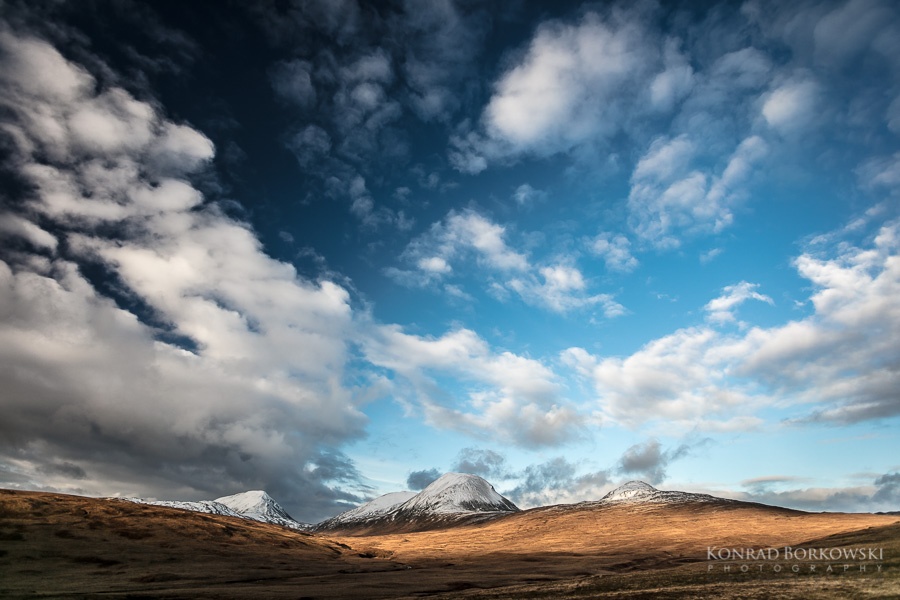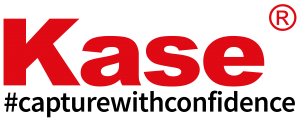September 2, 2020
In Conversation with Konrad Borkowski
During my recent visit to the Isle of Jura, I met up with the only professional photographer on the island, Konrad Borkowski

For an island of around 200 people, it’s quite amazing that the Isle of Jura can support the career of a professional photographer. That’s the equivalent of there being 25,000 professional photographers in a city like Edinburgh if you applied the same percentage. Konrad Borkowski has set up a gallery on the island which supplements his work photographing the wildlife, landscape and whisky industry on both Jura and neighbouring Islay. I had a conversation with Konrad to find out more about his work. You can hear the full interview by searching a podcast provider such as iTunes or Spotify for the Edinburgh Photography Workshop podcast.
Who is Konrad Borkowski?
Rich Dyson: Hi, Konrad. It’s quite exciting for me to be chatting today as you’ll be the first interview I have done on the Edinburgh Photography Workshop podcast.
Konrad Borkowski: Hi, hello. Hello, everyone.
Rich Dyson: Like many of the residents of Jura, you weren’t born on the island. So, perhaps you could just start off by sharing a little bit about what it was that brought you to Jura.
Konrad Borkowski: Sure, I was born in Poland and I actually lived there for most of my life. I also lived a little bit in The States, travelled around, and I settled down on Jura in 2006. I actually put the date at 2005 because this was the first time myself and my better half came to live in Scotland. We actually came to Islay first. But the whole story started from my first trip to Islay in 1999, where I got a little bit accidentally. I was doing a bit of a research on Celtic languages, their history and then got to Islay. It was a bit of a chance trip, and I absolutely fell in love with the place. So I decided to come almost every year for the next five years, usually during my nni break, and at one point, I thought it would be great to live there, you know.
Just to cut the story short 2005 came and we said we’re moving to Islay. So, we moved to Islay, We spent a year on Islay and from Islay we moved to Jura. A lot of people ask: why did you move to Jura and I say, well, Islay was too busy for us! It’s a bit of a joke, you know, as Jura has 200 people and the whole of Islay is about 3,500. But there’s something about Jura that is just not entirely tangible, that that draws you to the place. I come from a fairly big city, about 1 million people, in central Poland and I never really enjoyed the city lifestyle. I always wanted to get away to a place where I’ve got access to nature, where I’m close to nature, where I can go to mountains, lakes, and seaside, all in one. Previously, being kind of based in the centre of Poland, I had to drive six hours to the lakes, six hours to the seaside, five hours to the mountains. So you ask yourself – why do that? Why spend your life doing things that you’re not necessarily going to be enjoying, and then spending all your money to travel to these places where you can actually move to a nice place like Jura. So I found it (this place) a little bit accidentally and I fell in love with it – to cut the story short.
Rich Dyson: And when you came to Jura, did you expect to be doing photography full time? Was that the expectation?
Konrad Borkowski: No. I knew that it’s going to be a process. I wasn’t at that time a professional photographer. I studied photography on my own a lot. I did actually join a school at some point, but I found out I wasn’t actually learning much, so it’s really through the process of watching other photographers doing a lot of work and helping out I kind of learned the craft. I’m still developing. Breakthrough time was actually 2012 when I gave up a lot of jobs and managed to support myself solely from photography. The whisky industry seems to be a bit of a niche, but you know, I shoot landscape, I should wildlife, I shoot portraits, something that you really have to do if you’re in a place like this. You kind of need to diversify a little bit, but you can say I specialise in a whisky lifestyle photography. So yeah, in short, I knew I wasn’t going to be able to live off photography at the beginning. And I knew it was going to be a process. And yeah, I had a lot of different jobs.
Rich Dyson: Tell me, perhaps just to cover off that. When people move to Jura, I think it’s very rare that somebody has one job.
Konrad Borkowski: Exactly. I think at one point in my life I was working in the bar, I actually did it for a few years. I was driving a bus, the local school bus. I was working as a commercial diver for about a year. And, I think I was doing a bit of a construction work sometimes helping other businesses, just as just as a labourer, I’m not qualified. On top of that, I was still doing photography, so different small gigs, you know, selling prints. So that’s kind of how it all started. I wasn’t at a single moment doing all four things at the same time, but I certainly was doing bar work, driving the bus and doing photography work at the same time working 17 hour days just to make sure I’ve got enough money to cover the bills, buy more equipment, and then just kind of establish myself. So it was a long process. I suppose if I lived in Edinburgh, Glasgow, it could have been easier. I’d maybe competing with more people, but I wouldn’t be enjoying the lifestyle as much. So yes, it took me pretty much six years to break through in that business, to get established enough that I could just live off photography. I was then getting enough commissions and recognition to do that.
Rich Dyson: I think that’s a good thing to say to people who might want to have a career in photography. I live in Edinburgh, and I know exactly the same that it took me probably four or five years to get to the stage where I could give up a job and start taking pictures professionally it’s not a quick thing to become a professional photographer.
Konrad Borkowski: Not at all. I think persistence is the key, and you got to be able to accept the failures. It’s just a learning curve, you know?
Rich Dyson: Absolutely
Konrad Borkowski: Being rejected sometimes, especially when you’re looking for work, you know that that’s going to happen.
Camera gear for shooting on Jura and Islay
Rich Dyson: So let’s move on to something that photographers like to talk about, which is the gear that they use. If you could share with people what kind of gear you use because, like you say, you’re taking pictures in the landscape, by the water. Jura is a big island with very few people. So how do you cart gear around that gets really professional looking pictures?
Konrad Borkowski:
Right. Okay, to be honest, I’ve actually got quite a bit of gear in terms of cameras and lenses. It’s probably due to the fact that I don’t really sell them by the time I will have used up the camera body. I think it’s doesn’t make any sense to sell it and also, I know if I’m going to be working in a harsh environment that I’d rather keep mine my old Canon 5D Mk II because if I break it or lose it, it’s not going to be the end of the world. I think it is one of the first cameras that actually delivered the quality of the image and performance for the money, that you can still do a great job with it and not be ashamed of using it. So I’ve got a couple of Canon 5D Mk II’s. I’ve got a Canon 6D, I’ve got a Canon 5D Mk III, and I’ve got the Canon 5 DSR, the one with 50 megapixels because if I shoot landscape and I shoot the Ardfin golf course here. Sometimes they want to crop pictures so it’s handy.
Also when I travel, I’ve got three different Sony’s, well it’s the same A series of Sony – A6000. So the 6000, the 6300, and the 6500, mostly because they’re lightweight. I never actually switched to Sony full-frame because I’ve got the offset of the weight. If you’re actually shooting the crop sensor – it’s small enough. I often travel with two or three of them with different lenses on them and my bag is maybe seven kilos instead of twelve. It’s mostly when I do long walks onto the hills or shooting abroad. If it’s going to be a serious job abroad then, yes, I will bring all my Canon gear. Sometimes, maybe exchange (one Canon) with one Sony but, if it’s just private projects that I can take my time with, it will be Sony cameras with a lot of primes, mostly Sigma primes, actually, they are very good.
Rich Dyson: That’s really good. I do photography workshops in Edinburgh. And I see people with 10-year-old cameras, and they can get great results. I think it’s good to hear that people can get great images with gear that’s ten years old.
Konrad Borkowski: Exactly. Actually I also sometimes I shoot with my older kind of point and shoot Canon S100, which I got years ago, just as a real pocket camera. I’ve managed to get underwater housing for it for like a couple hundred quid, which if you’re looking for an underwater housing for a DSLR, they cost much more money. If you’ve got good light, and if you keep it steady, you can actually get good quality results. In fact, my cover of this year’s calendar was shot with that. It just tells you that it’s really about the light.
Rich Dyson: Absolutely. We’re going to talk in a short while about three of the photographs that you’ve allowed me to put onto the website. I think people will really see how you use light superbly in lots of pictures in there.
So, let’s actually switch on to those three photographs. The first one that you’ve sent over to me was a picture of two deer perched on a hill. For those who don’t know Jura, there’s many, many, more times deer than there are people on the island, which you would think would make it easy to shoot deer. But, I know from personal experience being on Jura a number of times, that’s not the case. So, could you just talk us through that image. How you went about photographing it and generally how do you photograph deer?
Konrad Borkowski Portfolio snapshots
Konrad Borkowski: It’s actually a funny thing because I always contrasted this particular image that I sent you with another one, and there’s a bit of a difference in how long it actually took me from the time I pre-visualised the image to get that. The actual silhouette of the two deer – it was a lucky shot. It took me 10 seconds to get, when I was driving. I saw the deer on a hill, it was the rutting season. I rolled the windows down, I had a long lens on, took couple of shots and then they disappeared. I kind of juxtapose it, you know, contrast it with the image of this one.
Rich Dyson: Oh, yeah. The moon shot. A deer with the moon behind it.
Konrad Borkowski: Yeah, so this one took me two and a half years to get from the moment I pre-visualised it. I think it’s the fact that I’m based here, so obviously I shoot a lot, and I’m out a lot, and I will come across situations where I can get lucky and get a good image. I mean, everyone can do that, you know, it’s just that it really is dependent on the number of times you’re out and you actually try to get that shot.
The deer with the moon was difficult to get because you can only shoot it once a month if you want to get at twilight in that particular location because the moon will rise about an hour later every day. Which means the next day, if you still got good weather, the moon is not going to be there yet at the same time. And if you wait 50 minutes, as it rises 50 minutes later, it will be too dark. So it’s the combination of both. Sometimes if you look out for a specific shot that you want, yes, it might take you a while to get it. But a lot of the times there are lots of other interesting things happening that you’ll be just lucky to get because you’re out and about because you know of the proper time and you often have to come back to the same places. So yeah, that was just a chance shot that I took from the car of the two deer.

Rich Dyson: I guess what you’re saying there if I paraphrase it, is that you’ve got to be out ready to take pictures you’re got have a camera ready with you.
Konrad Borkowski: I always say the best camera is the one that you’ve got with you and always have it ready to shoot. Often when you walk up the hills, and you’ve got a camera in your backpack, if you see something interesting, it’s not going to happen most of the time, especially in Jura. A deer is just going to see as you start unfolding your bag and they’ll run away. It makes sense, if you know things might be happening, to have the camera ready to shoot, and in that case, I was in the car and ready to get that shot.
Rich Dyson: I always say you make your own luck by being ready to go and doing the right thing. Okay, so that’s one photograph showing the wildlife on Jura. The second one, I’m not sure whether it’s actually on Jura, but it’s a picture of distillery man rolling a barrel through a whisky warehouse. You told us that you do quite a lot of whisky photography.
Konrad Borkowski: Yeah, so this was a shot commissioned by Kilchoman Distillery. Basically, I was doing a lot of social media photography for them and we needed to get some shots done in the warehouse on Islay. There wasn’t anything specific that they were looking for, just some general shots in the distillery. I am usually trying to come up with some stories. When I get to the place, I usually just try to improvise. I don’t always have a plan, but I see what’s happening and then I try to create a mood and a feel about the shots. In this case, it was originally a colour shot, but actually it really works nicely in black and white. After I shot in colour, I decided it would look better in black and white. It wasn’t particularly sophisticated light usage, because I wanted fairly deep shadows and very harsh light, so what I did was simply use the off-camera flash. I think it was just the Canon 580EX flash set off-camera on a stand.

Rich Dyson: That’s one of the things that really stands out for me about the shot, the way you use that light to illuminate his face and his arms, and he just stands out against the rest of the darkness of the casks and the warehouse. It’s a really fantastic shot.
Konrad Borkowski: I think the lens I used was the Sigma 35 mm 1.4 so it’s like really, really open wide with this decent bokeh, and I think this also contributes to the shot
Rich Dyson: It really adds to the depth of field that you’re being tight on the subject, and then both the barrels in front and behind are just blurring away, just to make the subject actually stand out. So, excellent shot. That’s fantastic.
The final picture is the really amazing Big Sky shot of the Paps of Jura. What I really like about this picture is the perspective you’ve used in making the Paps, which are huge mountains that dominate the island, making them look really small in the image and then the fantastic light you captured on there. So just tell us about capturing that shot.
Konrad Borkowski: Okay, so this, actually, in all honesty, it was supposed to be a time-lapse. I wanted to get a slightly different view of the Paps where you know a lot is happening in the sky; where the light is changing. What I did is set up the camera for about 45 minutes, shooting, I think, every one or two seconds, I can’t remember at the moment. I actually left it. I went to another location to shoot something else. I knew that obviously I could probably just hang around there and get more shots, but often, if I’m pressed for time, I will set up something on time-lapse and come back later. So, I went through all the footage and chose the one that kind of appealed to me the most. It’s the ever-changing light on Jura which literally changes within a few seconds, that makes the picture. You’ve got a part of the island in the shadow and in sunlight and you’ve got beautiful clouds. I think it was either late November or early December when this was shot. It’s usually after rain, and it’s clear then, this clarity kind of makes things pop up. And there’s also a nice brown colour with kind of golden sheen to it. Yeah, I love that shot. I think it was on the cover of one of my calendars a couple of years ago.

Rich Dyson: It’s a really stunning shot. Thanks for sharing those three pictures with me. If you go to Konrad’s’ gallery on Jura, it’s well worth the trip. There’s lots more fabulous photographs available there. If you want to just share, Konrad with the places where people can see your photographs, both online and where the gallery is on Jura?
Konrad Borkowski: My main website is KonradBorkowski.com. Sometimes I find that some people will have information that is not safe to go there because of something to do with an SSL security certificate, but it is safe to go. If you Google my name, it will transfer you to one of my picture galleries online, which I’ve got on Smugmug. The address is ikon.smugmug.com. I think you’ll put it in the show notes.
The gallery has got a separate website, which is www.thewhiskyisland.co.uk. Again, it’s a similar situation that sometimes it might not transfer you due to that issue. But again, if you Google it, or if you go to one of my social profiles, I will actually have direct links to it. So the gallery website is mostly to tell people when I’m here, I’m normally here, five or six days a week. Often when I’ve got a photoshoot we have to close earlier. Sometimes I can find someone to fill in. So usually that information will be online. It’s always best to send me a message that you are coming just to check if I’m here because of last-minute shoots which kind of take priority to this. Other than that, I’m open, at the moment, six days a week. I put the hours from 11 to 4pm, but I’m often coming in early, and I’m staying longer, but it’s just safe to assume that I’ll be within those hours.
Rich Dyson: As you say, Konrad, I will include all your social media pages and links in the notes below the podcast. So, if people are interested, I’d really encourage you to go and have a look a Konrad’s fantastic work. And thanks very much Konrad for today.
Interview reflections
It was really great chatting with Konrad. I hope that that interview gave a perspective on the life of a photographer away from a big city. Konrad has used his location to create a speciality for himself. He’s immersed himself in island life and as a result, is running a successful photography business, but more importantly, enjoying himself at the same time. However, it’s also Konrad’s work ethic that is important. Hopefully, you can see that he continues to work hard to improve his photography and his business.
Listen along
If you don’t feel like spending time reading these blogs, you can now listen to them instead. Head to your usual podcast providers such as iTunes or Google podcasts and search for The Edinburgh Photography Workshop Podcast. If you do like listening, please subscribe to hear it every week and leave a review. That helps others to find the podcast as well.
Give us your feedback
If you’ve got any questions or comments, leave them below. You can sign up for the Edinburgh Photography Workshop monthly newsletter where you’ll get regular updates on exciting things happening in photography and some great tips. Sign up by clicking here.
